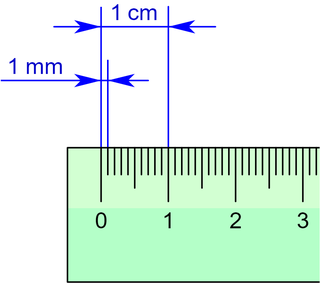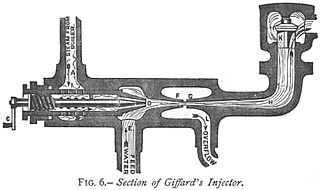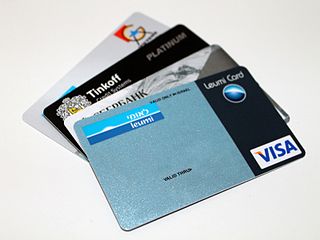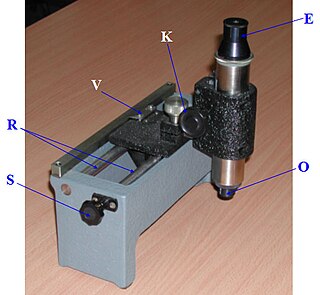Testing
A standard one-inch micrometer has readout divisions of 0.001 inch and a rated accuracy of ±0.0001 inch [15] ("one tenth", in machinist parlance). Both the measuring instrument and the object being measured should be at room temperature for an accurate measurement; dirt, operator skill issue, and misuse (or abuse) of the instrument are the main sources of error. [16]
The accuracy of micrometers is checked by using them to measure gauge blocks, [17] rods, or similar standards whose lengths are precisely and accurately known. If the gauge block is known to be 0.75000 ± 0.00005 inch ("seven-fifty plus or minus fifty millionths", that is, "seven hundred fifty thou plus or minus half a tenth"), then the micrometer should measure it as 0.7500 inch. If the micrometer measures 0.7503 inch, then it is out of calibration. Cleanliness and low (but consistent) torque are especially important when calibrating—each tenth (that is, ten-thousandth of an inch), or hundredth of a millimetre, "counts"; each is important. A mere speck of dirt, or a mere bit too much squeeze, obscures the truth of whether the instrument can read correctly. The solution is simply conscientiousness—cleaning, patience, due care and attention, and repeated measurements (good repeatability assures the calibrator that their technique is working correctly).
Calibration typically checks the error at 3 to 5 points along the range. Only one can be adjusted to zero. If the micrometer is in good condition, then they are all so near to zero that the instrument seems to read essentially "-on" all along its range; no noticeable error is seen at any locale. In contrast, on a worn-out micrometer (or one that was poorly made to begin with), one can "chase the error up and down the range", that is, move it up or down to any of various locales along the range, by adjusting the sleeve, but one cannot eliminate it from all locales at once.
Calibration can also include the condition of the tips (flat and parallel), ratchet, and linearity of the scale. [18] Flatness and parallelism are typically measured with a gauge called an optical flat, a disc of glass or plastic ground with extreme accuracy to have flat, parallel faces, which allows light bands to be counted when the micrometer's anvil and spindle are against it, revealing their amount of geometric inaccuracy.
Commercial machine shops, especially those that do certain categories of work (military or commercial aerospace, nuclear power industry, medical, and others), are required by various standards organizations (such as ISO, ANSI, ASME, [19] ASTM, SAE, AIA, the U.S. military, and others) to calibrate micrometers and other gauges on a schedule (often annually), to affix a label to each gauge that gives it an ID number and a calibration expiration date, to keep a record of all the gauges by ID number, and to specify in inspection reports which gauge was used for a particular measurement.
Not all calibration is an affair for metrology labs. A micrometer can be calibrated on-site anytime, at least in the most basic and important way (if not comprehensively), by measuring a high-grade gauge block and adjusting to match. Even gauges that are calibrated annually and within their expiration timeframe should be checked this way every month or two if they are used daily. They usually will check out OK as needing no adjustment.
The accuracy of the gauge blocks themselves is traceable through a chain of comparisons back to a master standard such as the international prototype of the meter. This bar of metal, like the international prototype of the kilogram, is maintained under controlled conditions at the International Bureau of Weights and Measures headquarters in France, which is one of the principal measurement standards laboratories of the world. These master standards have extreme-accuracy regional copies (kept in the national laboratories of various countries, such as NIST), and metrological equipment makes the chain of comparisons. Because the definition of the meter is now based on a light wavelength, the international prototype of the meter is not quite as indispensable as it once was. But such master gauges are still important for calibrating and certifying metrological equipment. Equipment described as "NIST traceable" means that its comparison against master gauges, and their comparison against others, can be traced back through a chain of documentation to equipment in the NIST labs. Maintaining this degree of traceability requires some expense, which is why NIST-traceable equipment is more expensive than non-NIST-traceable. But applications needing the highest degree of quality control mandate the cost.
























